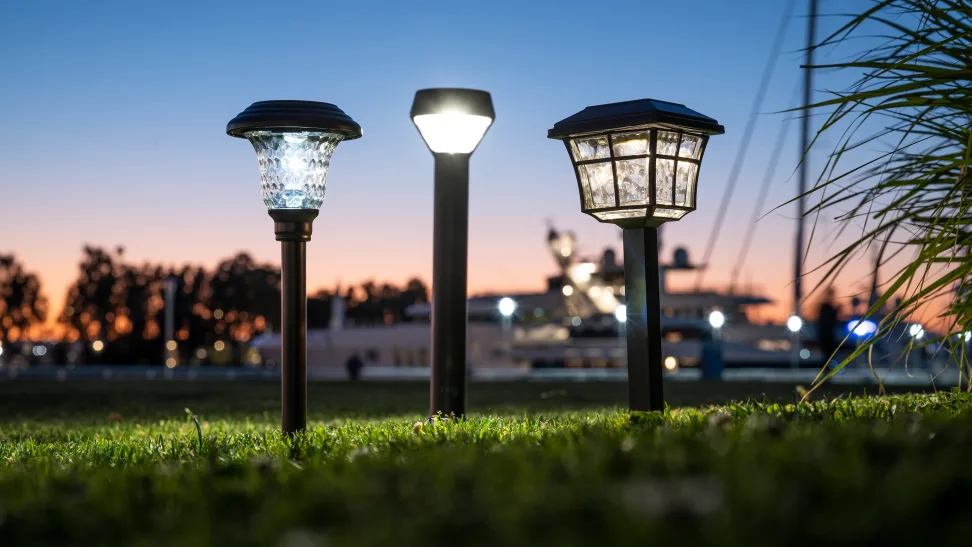Solar garden lights are a fantastic option when it comes to lighting up your garden. They’re eco-friendly, cost-effective, and easy to install. But not all solar lights are the same, especially if you want them to perform well year-round. From freezing winters to scorching summers, your solar lights must withstand the elements while keeping your outdoor space beautifully lit. Here’s how to choose the right ones for all seasons.
Understand Your Lighting Needs
Before buying solar lights, take a moment to think about what you need. Are you looking to light up a pathway, highlight a flower bed, or create a cozy ambiance for evening gatherings? Different types of lights serve different purposes, so knowing your goal will help you narrow down your options.
For example, path lights are great for illuminating walkways, while spotlights can highlight trees or garden features. String lights add a festive touch and decorative lanterns give patios or seating areas a charming vibe. Once you know what you’re looking for, you can focus on finding the right light that stands up to the weather.
Look for Durable Materials
Not all solar lights are built to last. Pay attention to the materials if you want lights that can handle rain, snow, and intense sunlight. Stainless steel, aluminum, and high-quality plastic are excellent choices because they resist rust and corrosion. Avoid cheap, flimsy materials that can crack or fade over time.
Also, check the lights’ IP (Ingress Protection) rating. This rating shows how well the lights are protected against dust and water. For outdoor use, look for an IP rating of at least IP44, which means the lights can handle water splashes from any direction. If you live in an area with heavy rain or snow, opt for lights with a higher rating, like IP65 or IP67.
Consider Battery Performance
The battery is the heart of any solar light. It stores the energy collected during the day and powers the light at night. For year-round performance, choose lights with high-capacity, durable batteries. Lithium-ion batteries are a great option because they last longer and perform better in extreme temperatures than older nickel-metal hydride (NiMH) batteries.
Also, consider the battery’s charging time and runtime. Some lights can run for up to 12 hours on a full charge, while others may only last a few hours. If you live in an area with shorter daylight hours in winter, look for lights with efficient solar panels and long-lasting batteries to ensure they stay bright all night.
Check the Solar Panel Quality
The solar panel keeps your lights powered, so its quality matters. Look for lights with monocrystalline or polycrystalline solar panels, as they’re better at converting sunlight into energy than amorphous panels. The size of the panel also matters. Larger panels can capture more sunlight, which is especially important in areas with less direct sunlight.
Consider lights with detachable solar panels if you live in a region with long winters or frequent cloudy days. These panels can be placed in a sunny spot while the light can be kept in a shaded area.
Evaluate Light Brightness and Color
The brightness and color of your solar garden lights can make a big difference in how your garden looks at night. Brightness is measured in lumens; the right level depends on your needs. For subtle pathway lighting, 10-50 lumens is usually enough. Look for lights with 100 lumens or more for accent lighting or security purposes.
Color temperature is another factor to consider. Warm white lights (around 2700K-3000K) create a cozy, inviting atmosphere, while cool white lights (4000K-5000K) provide a brighter, more modern look. Some lights even come with color-changing options, allowing you to switch up the mood whenever you like.
Think About Placement and Installation
Where you place your solar lights can affect their performance. For optimal charging, install the lights in areas with plenty of direct sunlight during the day. Avoid placing them under trees or in heavily shaded areas, as this can reduce their ability to charge fully.
Also, consider the ease of installation. Most solar lights are stake-style, meaning you simply push them into the ground. However, if you have rocky or hard soil, look for lights with sturdy stakes or alternative mounting options. Some lights can be hung from hooks, mounted on walls, or placed on flat surfaces, giving you more flexibility in your garden design.






